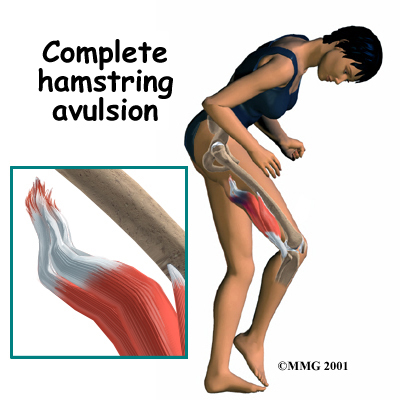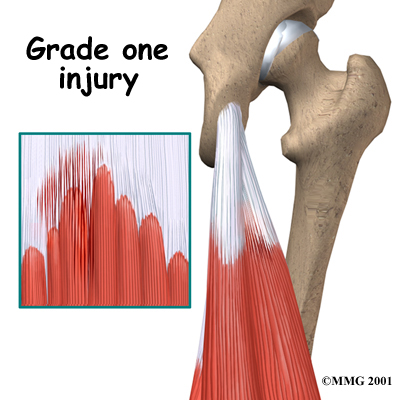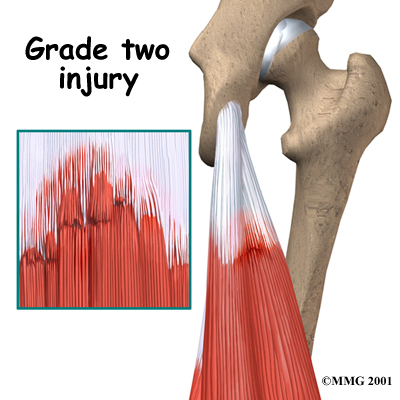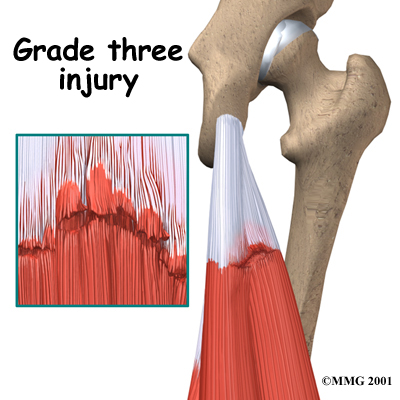Non-surgical Rehabilitation
It is very important to treat and rehabilitate your hamstring injury correctly. Incomplete or improper healing makes reinjury much more likely.
Although every patient recovers at a different rate, as a general rule, for minor muscle pulls, you may need two to four weeks to safely get back to your activities. For more severe muscle tears, you may need rehabilitation for two to three months, with complete healing possibly taking four to six months.
When you begin your physical therapy program at STAR Physical Therapy, within the first five days after your injury, the main goal of our treatment is to control the swelling, pain, and hemorrhage (bleeding). Hamstring injuries are initially treated using the RICE method. RICE stands for rest, ice, compression, and elevation.
Rest
Rest is critical. Our physical therapist may recommend a short period (up to one week) of immobilization. Severe tears may require a longer period of rest. This may mean you spend most of your time lying down. You may need to use crutches to get around. If you put too much weight on your hamstring after an injury, more damage may occur and more scar tissue may form. Our physical therapist can help you learn how to properly move about on your crutches.
Ice
We will apply ice to the injured hamstring. This will help to control swelling and pain but doesn't stop it completely. This is important because your body's inflammatory response actually helps your muscles heal. Cold treatments slow the metabolism and blood flow in the area. Cold also reduces your sensations of pain by numbing the nerves. And experiencing less pain helps you relax, reducing muscle spasms.
A plastic bag full of ice cubes or crushed ice, held on with an elastic bandage, is the most effective type of cold treatment. The ice should be kept on the injury for 10 to 15 minutes. You can also use cold gel packs, chipped ice, or cold sprays. We recommend that cold treatments should be repeated at least four times a day for the first two to three days. They can be done as often as every two hours if needed. Do not keep the ice on the skin too long or frostbite may occur.
Compression
Compression can help reduce the bleeding in your muscle to limit swelling and scarring. To apply compression, your physical therapist may wrap your hamstring firmly in an elastic bandage. It is unclear exactly how effective compression is in hamstring injuries, but patients often report having less pain with the wrap.
Elevation
Elevation can help reduce swelling. It also keeps your leg immobilized. The key to elevation is to raise and support the injured body part above the level of the heart. In the case of a hamstring injury, this requires lying down and supporting the leg up on pillows.
Medication
Our physical therapist may also recommend a short course of nonsteroidal anti-inflammatory drugs (NSAIDs), such as ibuprofen, to help relieve the swelling and pain. For muscle injuries, pain relief may be the major benefit of NSAIDs. They do not always treat the swelling of muscle injuries very effectively.
Health care providers disagree on when to give NSAIDs. Some think you should start using them right after the injury and stop using them after three to five days. Others think you should not use them for two to four days so you don't interrupt your body's natural healing response. The inflammation is an important part of your body's work to heal your injury. It is important that you follow your health care provider’s advice.
Stretching & Exercise
As your hamstrings begin to heal, it is critical that you follow your STAR Physical Therapy exercise program to regain your strength and mobility. Our specially designed exercises encourage your body to rebuild muscle instead of scar tissue. The exercises also help prevent reinjury. Rehabilitation can be slow, so you will need to be patient and not push yourself too hard or too fast.
Early in your rehabilitation, our physical therapist may recommend that you do some of your exercises in a swimming pool or on a stationary bike set to low resistance. These exercises allow you to take your hamstrings through a range of motion without having to hold up your weight. When you can walk without a limp and feel very little tenderness, we will have you start a walking program. Eventually you can work up to jogging.
Stretching will be a key feature of your STAR Physical Therapy rehabilitation program. Our physical therapist will show you how to stretch properly. Plan to continue these stretches even after you heal, because a reinjury of the same hamstring is common. Increasing your flexibility may help you avoid another hamstring injury in the future. It is important that you maintain good flexibility to keep your hamstrings healthy.
We may begin your strengthening exercises with isometric exercises. These exercises involve contracting the muscles without moving your leg joints. As your hamstrings get stronger, we will add light weights. It is important that you feel no pain during these exercises.
You should maintain your general level of fitness throughout your rehabilitation. Our physical therapist can suggest workouts that don't stress your hamstrings.
Most hamstring injuries get better with treatment and rehabilitation. Even world-class athletes with severe hamstring injuries are usually able to return to competition. By keeping the hamstrings flexible and giving the body time to heal, you should be able to return to the activities you enjoy.
Post-surgical Rehabilitation
Surgery is rarely needed, and only if there is a complete avulsion or tear. If you do have surgery, you will begin your recovery with a period of rest, which may involve using crutches. Our physical therapist can show you how to properly use your crutches to aviod putting too much weight on your healing leg. After surgery our physical therapists can start you on a careful and gradual exercise program for your post-surgical rehabilitation.
When your recovery is well under way, regular visits to STAR Physical Therapy will end. Although we will continue to be a resource, you will eventually be in charge of doing your exercises as part of an ongoing home program.
STAR Physical Therapy provides services for physical therapy in Fairport and Rochester.
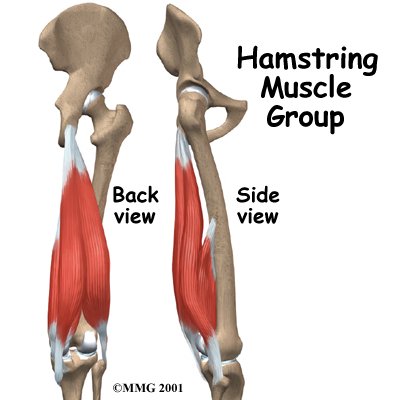
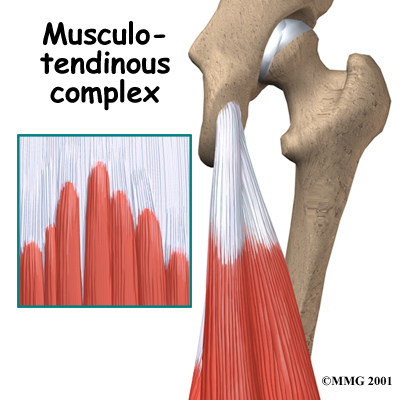
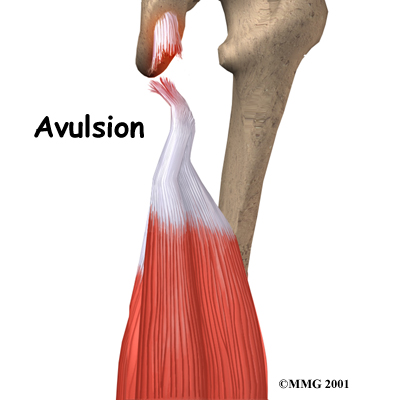 In a severe injury, the small blood vessels in the muscle can be torn as well. This results in bleeding into the muscle tissue. Until these small blood vessels can repair themselves, less blood can flow to the area. With this reduced blood flow, the muscles cannot begin to heal.
In a severe injury, the small blood vessels in the muscle can be torn as well. This results in bleeding into the muscle tissue. Until these small blood vessels can repair themselves, less blood can flow to the area. With this reduced blood flow, the muscles cannot begin to heal.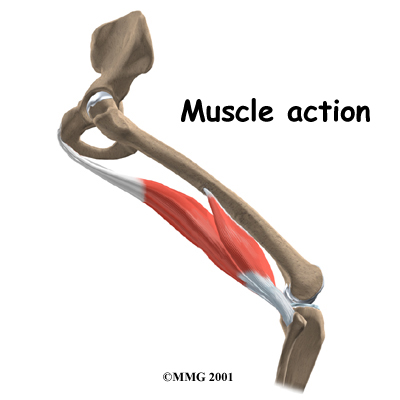 motions with the legs are the major cause of hamstring injuries. Hamstring injuries most often occur in running, jumping, and kicking sports.
motions with the legs are the major cause of hamstring injuries. Hamstring injuries most often occur in running, jumping, and kicking sports.